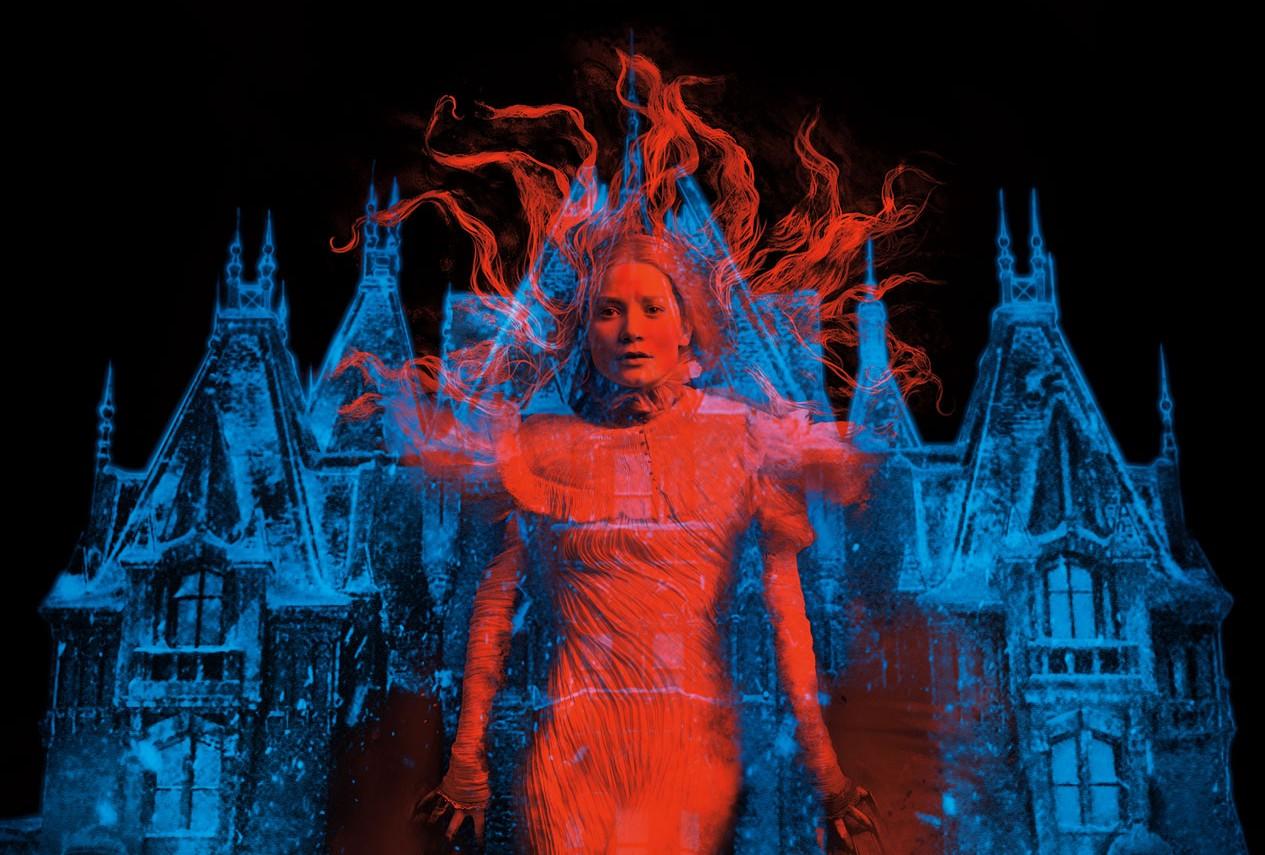Opening two weekends before Halloween and marketed as a horror film, Guillermo Del Toro’s “Crimson Peak” is not the masses’ cup of tea. With an estimated budget of about $55 million and an opening weekend at a total of $13.1 million in the U.S., the film grossed only $29.8 million as of Nov. 6 according to IMDb.com.
“Crimson Peak” is considered a flop by monetary standards, but does this merit the film’s dismissal? Feel comforted, Del Toro fans. Despite the box office, the story in “Crimson Peak” is told with the beauty and elegance expected from a highly esteemed, artistic and seasoned director.
Katie Rife, a journalist from AVclub.com, said “Crimson Peak” “may end up being brought down by its own marketing, but to be fair it is a difficult movie to sell.” Del Toro corrected the misnomer genre and christened the film a “gothic romance,” as opposed to a horror film.
This new label and genre is much more appropriately deemed, especially for a film with a lengthy and twisty plot line. This is a hard movie to sell because of the way audiences perceive the horror archetype. The masses expect a feeling of terror throughout the entire length of the film.
With ghost films, the horror factor relies heavily on the supernatural adapting a vengeful and haunting personality while the dead are pitted against the living. Del Toro’s approach is almost the exact opposite. The dead, or supernatural, take a matriarchal form as protectors and nurturers while the living take the form of monsters and hecklers.
A.O. Scott from the New York Times said, “the film is too busy, and in some ways too gross, to sustain an effective atmosphere of dread.” Scott also suggests that Del Toro “overdoses” on these aspects to cause an unstable atmosphere of dread. The busy aspects of the film do not stem directly from the plot but rather the visuals and special effects.
The gross aspect Scott describes might have to do with the sexual content as well as the gore scenes stuffed in at the end of the film. The busy aspect could refer to the use of the color red and the appearance of the spirits. It is certainly not your run of the mill haunted house horror movies, and certainly not your average “Jane Austen” era romances.
“Crimson Peak” began as Del Toro’s 2006 film “Pan’s Labyrinth” did, a flash-forward to the end of the film with a voice-over narration and then a gentle flashback. Edith Cushing, played by Mia Wasikowska, is an aspiring young writer, who would prefer to be of Mary Shelly merit rather than Jane Austen popularity, and an American heiress.
In the opening scene, Edith is standing in the snow breathing heavily with her face cut up. She says in a voice over, “Ghosts are real, this much I know.” The scene fades slowly to an overhead shot of a casket being carried to grave.
Her mother’s ghost, in a subsequent flashback, warns her to beware of the “Crimson Peak.”
As far as technical specs, such as cinematography, mise en scene and special effects, this film captures and demands the attention of viewers for the entire 119 minutes.
The effective use of high angle shots to portray vulnerability is beautifully executed despite any context of shots. For instance, the scene where Edith is thrown from the balcony but gracefully lands in the pile of accumulated white snow is gorgeously executed despite a knowledge of how she fell. The high angle shot lingers so viewers see the whiteness of the snow and realize the fragility of Edith, then it cuts to black.
Probably the most prominent mise en scene technique is the chiaroscuro lighting, causing the audience to feel more emotion and more anxiety from a lack of light. This technique was explicitly used for many spirits. At some parts you can only see their dark eyes, and at others you can see the crimson red and shadowiness of their “skin.”
The technique is also apparent in the scene where the protagonists find each other at a hotel and embrace for a passionate kiss. The sun shines brightly in the background and illuminates Edith’s silhouette in the foreground while Thomas Sharpe’s, (Tom Hiddleston), face catches the shadow, and the audience can see the strong dichotomy of light, dark, clarity and mystery surrounding the two characters.
This film not only showcase beautiful cinematography and unique, if not busy, special effects, but superior performance of the actors, specifically the performances from Jessica Chastain and Mia Wasikowska. Chastain plays an against-type character aside from her strong yet supportive roles like in “The Martian” and Interstellar.”
In “Crimson Peak,” Chastain’s character Lady Lucille Sharpe reminds audience of Kathryn Merteuil, played by Sarah Michelle Geller in the 1999 film “Cruel Intentions.” However, Lucille is more maniacal, elaborate and reminds Del Toro fans of Captain Vidal’s ruthless character in “Pan’s Labyrinth.” In the film, her character is undermined by her gender, which allows her to slide under the radar.
Mia Wasikowska played her usual innocent and whimsical character and wound up the fiercest character at the end. Her character represented a strong and intelligent feminine figure that has not been depicted too often in films set in the Victorian era.
To those debating on seeing “Crimson Peak,” I say what Edith’s mother’s spirit encourages — “Beware!” Don’t let the box office elude you from seeing “Crimson Peak.” Things aren’t always what they seem, and you might be surprised at what happens as the film progresses. Del Toro fans should not go see Crimson Peak expecting the best film since “Pan’s Labyrinth,” but rather go enjoy Del Toro’s distinct influence and design.
My Score: 4/5 stars
Story by: Katie Murawski, A&E Reporter

